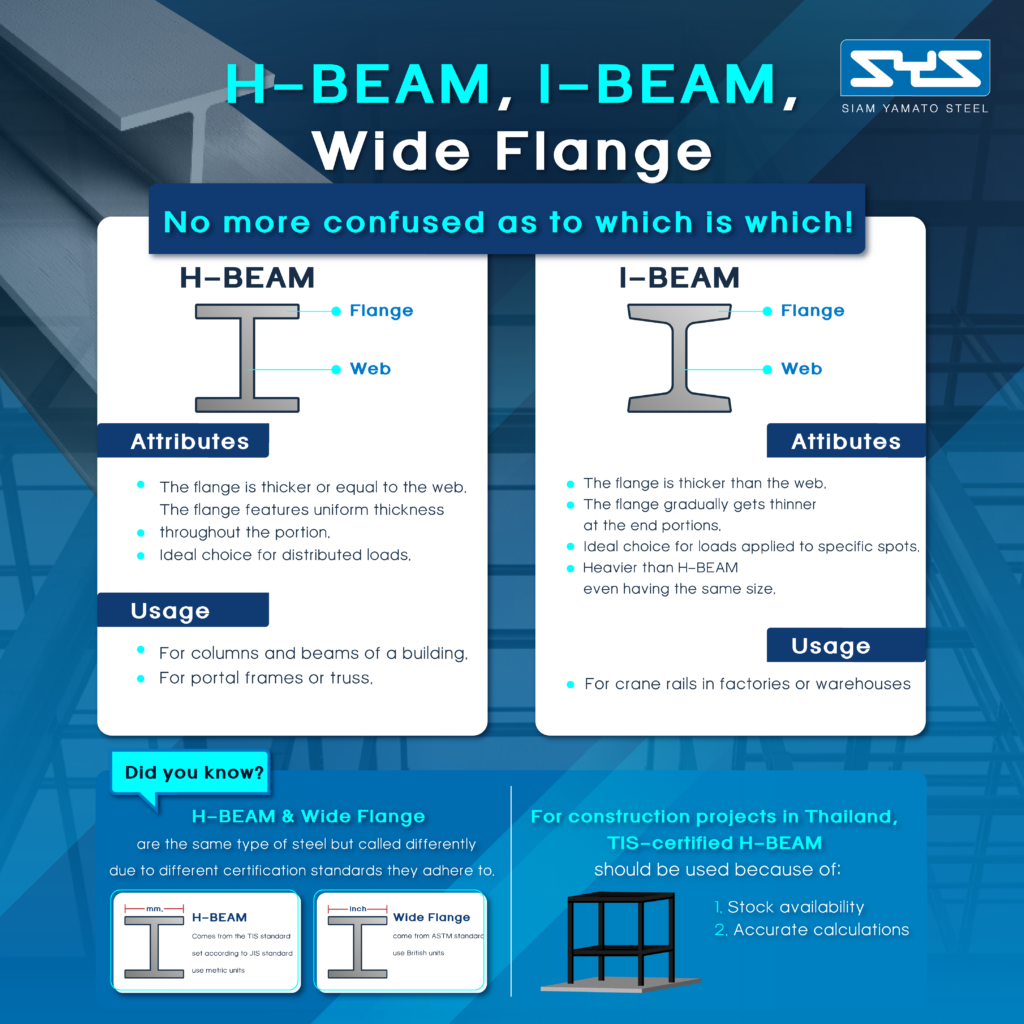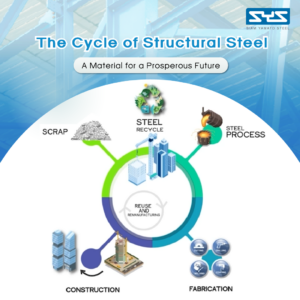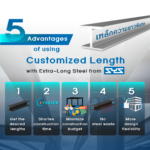
Many of you may wonder why always H-Beam when it comes to steel structure constructions, whether the project is large or small. Why not I-Beam? It’s quite similar though. That’s because H-Beam is configured to offer uniform thickness of flange, thus it’s more suitable for distributed loads. So, it’s usually used as a building’s core structure, e.g., columns and beams, or assembled into a Portal Frame. On the other hand, I-Beam boasts non-uniform thickness as its web will be the thickest part, with the thinnest part at both ends of the flange. As a result, I-Beam features better impact resistance properties and can support loads applied to specific spots, so it’s usually used as a crane rail in factories or warehouses. Moreover, the weight of I-Beam is higher than H-beam, if compared between the same depth and width. Therefore, it’s not suitable to be used as a building structure.
As for Wide Flange, it has an H cross-section similar to H-Beam, but the name it uses was derived from the US ASTM standard and the British system of length units (inches) is referred to. In contrast, H-Beam is regulated by the TIS standard of Thailand, which considers Japan’s JIS standard as the reference and uses the metric system of length units (millimeters). With different length measurement units being used, the sizes of H-Beam and Wide Flange are different accordingly.
Even though H-Beam and I-Beam have very similar cross-sectional characteristics, in the construction of steel structure, H-Beam should be biased to as it suits the purpose resulting in proper structural loads and cost efficiency. Moreover, constructions in Thailand should prioritize H-Beam that meets the TIS standards so that distance and steel size calculations can be done accurately and ensure that there are sufficient domestic steel materials for construction.







